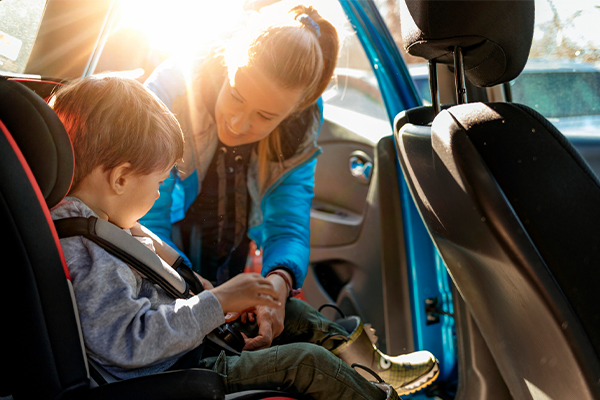How do you know which car seat is right for your little one?
If you are getting ready to have a new baby - you need a new car seat. If you're thinking about using a pre-owned car seat, think about the safety of your baby and consider these questions:
- Was the car seat recalled?
- Is the car seat more than six years old?
- Was the car seat in a crash?
- Is the car seat missing parts?
If you answered "yes" to any of these questions, or the car seat does not have an owner's manual, it is not considered safe.
I'm getting ready to have a baby. What car seat should I look for?
Infant car seats are rear-facing, designed to be portable, generally lighter in weight, easier to carry than car seats intended for older kids. Your baby should remain in a rear-facing car seat until he is two years old and at the height and weight limits of the seat.
When your child outgrows the infant car seat, move him to a convertible, 3-in-1 or an All-in-One car seat, used rear-facing.
Convertible seats
- Rear-facing until your child is 2 years old or reaches the upper rear-facing weight or height limit of the seat
- Forward-facing from about 2 years of age until your child reaches the upper forward-facing weight or height limit of the seat
- Never place in front of an airbag
When your child outgrows the convertible seat, move them into a booster seat. Don’t rush to move your child to a booster seat too early.
3-in-1/all-in-one
- You can use this seat for rear-facing, forward-facing with a harness and booster.
When forward-facing, use the harness and tether after your child reaches the top rear-facing size limit allowed by the manufacturer.
Booster seat
- There are three types of booster seats, high-back, backless and combination
- High-back booster seats are recommended if you have a low back seat that does not offer support for your child’s head.
- Backless booster seats can be used if your vehicle provides support for your child’s head.
Combination or All-in-One car seats can be used as booster seats. When your child outgrows the height or weight limits of the harness, remove the harness and use the seat as a booster.
When should I move my child to a seat belt?
Your child must:
- Be tall enough to sit without slouching
- Keep his back against the vehicle seat
- Keep her knees naturally bent over the edge of the vehicle seat
- Keep his feet flat on the floor
- Sit with the lap belt snugly across her upper thighs (not her stomach)
- Sit with the shoulder belt snug across his shoulder and chest (not his neck or face)
Car seat safety checks
If you’re concerned about your child’s safety in the car, schedule a free appointment for a car seat safety check with one of our certified car seat technicians:

